Spellbound (1945)
Directed by: Alfred Hitchcock
Written by: Angus MacPhail, Ben Hecht, Frances Beeding, Hilary St. George Sanders, John Palmer
Starring: Gregory Peck, Ingrid Bergman, Leo G. Carroll, Michael Chekhov
USA
RUNNING TIME: 111 min
AVAILABLE ON DVD
THE HITCHCOCK CAMEO: As Constance Peterson enters the Empire State Hotel lobby, Hitchcock is coming out of a crowded elevator, carrying a small violin case and daintily smoking a cigarette
REVIEWED BY: Dr Lenera, Official HCF Critic
Dr. Constance Petersen is a psychoanalyst at Green Manors, a mental hospital in Vermont, and is perceived by the other [all male] doctors as being detached and emotionless. The director, Dr. Murchison, is being forced into retirement shortly after returning from an absence due to nervous exhaustion. His replacement is the much younger Dr. Anthony Edwardes, with whom Constance finds herself falling in love, but he mysteriously reacts badly to seeing a diagram drawn with the tines of a fork on a tablecloth, then faints during an operation. By comparing handwriting, Constance realises that this man is an impostor and not the real Dr. Edwardes. He confides to her that not only does he suffer from amnesia and not remember who he is, but also that he killed Dr. Edwardes and took his place….
Spellbound doesn’t seem to be regarded too highly if you peruse some books about Hitchcock, though I think one of the major complaints – that the story is ridiculous and unbelievable – doesn’t hold too much water when the more widely praised Vertigo and North By Northwest also contain absurd plots that the majority of people don’t let bother them because of the generally superlative quality of the films. It’ s the same with criticisms of Spellbound’s talkiness: some other Hitchcock movies are more verbose and most of Spellbound’s chatter, after the early scenes, concerns the plot. In any case, I’m going to make a case for Spellbound being terrific. It has a consistently intriguing plot seems to have a twist round the corner every fifteen minutes or so, it’s often visually inventive, it has scenes of incredible suspense, it’s sometimes actually scary and disturbing as it delves into the deep recesses of the mind of an amnesiac who could be a murderer, it’s gloriously romantic in what is the first truly, madly and deeply romantic Hitchcock film, and its portrait of psychoanalysis may be respectful but is happy to possess a certain cynicism. In the best old school Hollywood manner, it may have its darkness and its fear, but also contains just enough humour and sense of fun to make Spellbound a film that really has something for everyone.
After Lifeboat, Hitchcock made two short films in French language for the Ministry of Information called Bon Voyage and Aventure Malgache, to be shown in non-German parts of France. There was a fad for psychoanalysis at the time, so producer David O’ Selznick [who even had his own psychoanalyst as on-set adviser] wanted to cash in on this. Hitchcock had bought the rights to Francis Beeding’s novel The House Of Doctor Edwardes, about impersonation, murder, witchcraft and satanic cults in an asylum, with the intention of throwing out almost everything except the main framework of the plot. Hitchcock and Angus MacPhail’s first script was too comical for Selznick, so Ben Hecht rewrote it, though it seems that much of the romance was added by Selznick himself. He wanted Joseph Cotten, Dorothy McGuire, and Paul Lukas to star, and Hitchcock wanted Cary Grant, but none of them were available. Hitchcock hated Selznick’s interfering and often pretended the cameras weren’t working or talked gobblygook to put him off. Surrealist artist Salvador Dali was hired to design the dream sequence, which was originally intended to run 20 minutes, but proving too complicated to realise, it wasn’t finished and much of what was filmed was cut, Selznick and designer William Cameron Menzies disliking what Dali came up with. Selznick had final cut and removed 14 minutes from the film, cutting an opening montage showing treatment of mental cases and shortening many scenes. It was a big box office success and was nominated for five Oscars.
There’s a noticeable clash between Selznick’s view of psychoanalysis, which was that it should be taken entirely seriously and regarded with total awe, and the looser attitudes of Hecht and Hitchcock, who wanted to have more fun with it. The opening scroll talks very solemnly of how great the process is, but when we are in the asylum much of the dialogue is light and even cynical. We only meet two mental patients, a man who thinks he killed his father [Normal Lloyd, the Saboteur] and a nymphomaniac [some lines regarding her had to be removed by order of the censors], but of course most of the staff seem to have serious issues too and it soon really looks like the inmates may have taken over the asylum. Spellbound takes a while to get going, but then the main character is not really ‘John Brown’, the amnesiac impersonating another doctor, but Constance Petersen, who is a typical old-style Hollywood female who is stiff, rigid and lacks the emotional experience, in the opinion of the male screenwriters, to become a successful doctor, but will soon have all that change when she falls in love [and, of course, stop wearing glasses]. John and Constance’s first meeting at dinner is a lovely example of that cliché of love at first sight. Constance later seems unable to sleep, goes downstairs to read the book John wrote, and finds herself drawn like a moth to a flame to John’s room with its light on. The gorgeous music by Miklos Rozsa goes on and on and the over the top romanticism is simply wonderful in a scene which could have been reduced to a couple of seconds but is allowed to be totally and wonderfully indulgent. Eventually the camera goes close-up on the couple’s eyes, and we see lots of symbolic doors opening over which the kissing couple are superimposed.
Of course it’s extremely hard to swallow that Constance believes John is innocent of murder and is willing to put her life in danger to cure him just because she’s fallen in love, but the script does seem aware of this, especially when the couple go to stay with Constance’s old mentor Dr Brulov who disapproves of what she’s doing, uttering some of the best lines like, “The mind of a woman in love is operating on the lowest level of the intellect!”. Michael Chekov superbly plays this lovable old coot who proves to be sharper than is at first apparent. By now the story has thrown up complication after complication, and you just have to go with them rather than stop and think too much. John’s trances, caused by black lines against a white background, build up to a hugely tense and rather frightening scene where he’s sleepwalking with a razor. The film’s climax seems to be taking place on a ski run, and it’s actually a bit poor with even worse back projection than normal and unconvincing staging, while John and Constance hardly seem dressed for skiing! There’s more though, and by now you just don’t want the film to end, it’s so fascinating. Hitchcock gives us some simple but powerful shots of Constance pleading for John as he is sentenced to prison, while Rozsa’s music is almost unbearably emotive. The climax of Constance facing the actual killer could have been developed, but it does end with a gun being fired at the audience by a giant model hand and a flash of red!
I think it’s a huge shame that so much of the Dali material went unused. It had things like a ballroom with hanging pianos, still figures pretending to dance while John danced with Constance, and Constance turning into a statue which cracked to show ants inside. Still, the two minutes that remain, with their psychoanalytic symbols like huge eyes, playing cards, a man with no face and wings done in Dali’s disturbing but hypnotic fashion [I adore the man’s art, especially the way it taps into the subconscious], are very memorable and must have freaked out many viewers at the time. Would you believe it Dali almost also made a film with Disney! Elsewhere Hitchcock feels free to experiment quite a bit with shots, like the drinking of a glass of milk from the point of view of the drinker, in a way he hasn’t done for a while. He said that he didn‘t like Rozsa’s score because it overpowered his direction, and it is a very loud, in-your-face score which is sometimes allowed to carry the film along when there’s little or no dialogue. It’s also fantastic music, if a bit repetitive, from its gorgeous love theme to its chilling suspense passages utilising the theramin [the first time the weird and wonderful instrument was used in a film score] to its moments of sheer intense feeling in the great Rosza manner. Sadly two cues near the end of the film were replaced by material by Franz Waxman and Roy Webb, presumably due to the scenes the music was supporting being edited down.
Bergman stated that she didn’t believe the love story, but you wouldn’t know it from the way she almost makes her foolhardy, cliched [and perhaps, to some modern viewers, condescending] character seem like a real person. Gregory Peck is a little stiff, though it’s possibly appropriate. He and Bergman have the required chemistry anyway in spades. Spellbound is glorious old-style escapism from the days when films felt able to appeal to almost anyone without dumbing down. It doesn’t really make any sense [in fact it doesn’t seem to exist in the real world at all, even right from the beginning where medical ethics doesn’t seem to have any place in Green Manors] but it’s such juicy fun watching it pretend to be. An early scene sees Constance, and maybe the scriptwriter, mock romantic clichés by saying, “People expect kisses to be like lyrical poems and embraces to be like Shakespearean dramas”, but the film goes on to try to make you believe those cliches nonetheless. In 1948 there was a radio performance of Spellbound with Joseph Cotten and Alida Valli and, while never remade, it has been a clear influence on films like Still Of The Night and Dead Again, while Hitchcock’s own Marnie is very similar.
Rating: 










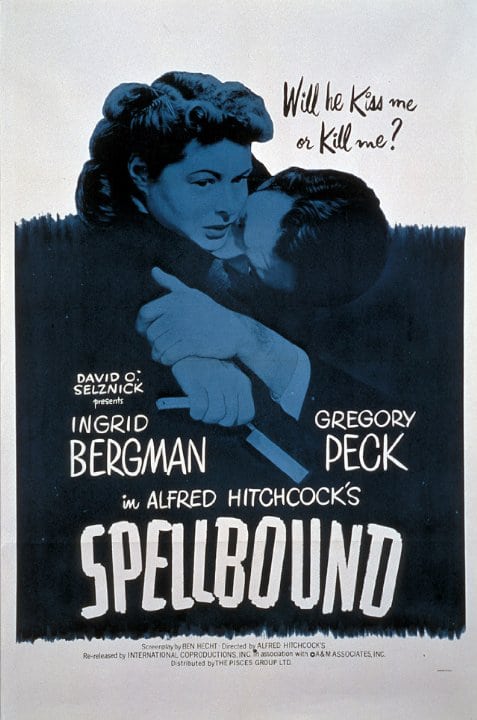
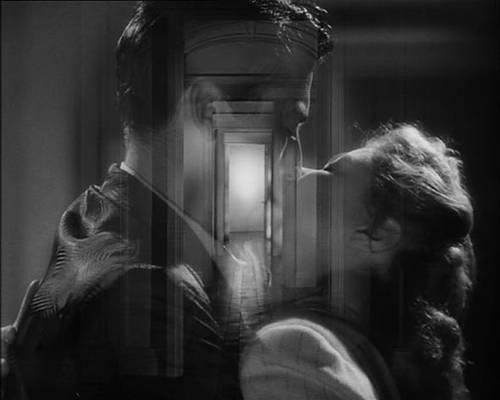
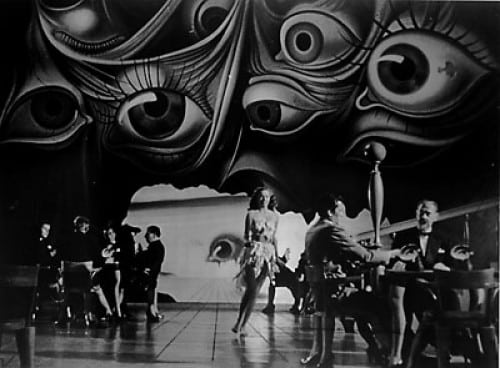

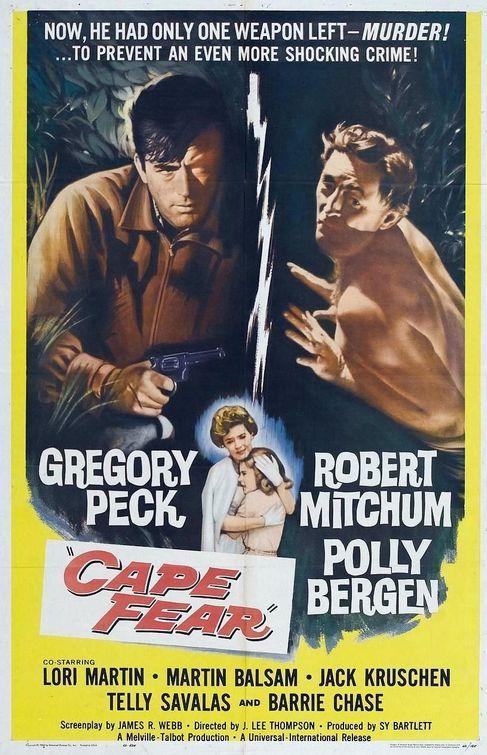
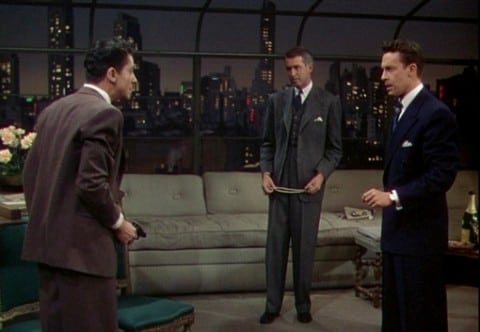

Be the first to comment